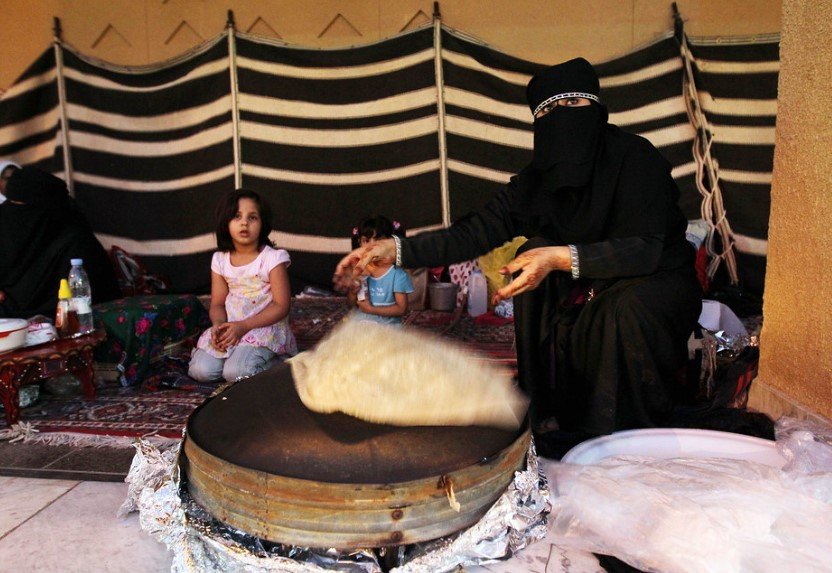The Kingdom’s labor market hits a major milestone, driven by rising female participation and deeper Vision 2030 reforms.
Saudi Arabia’s unemployment rate has dropped to a record 2.8% overall, with Saudi nationals logging their lowest-ever jobless figure at 6.3%. The shift is being powered, in no small part, by one unmistakable force: women.
The numbers from the General Authority for Statistics, released late June, paint a picture that would have been hard to imagine a decade ago. A labor market once heavily tilted toward men and foreign workers is undergoing a cultural and structural rewrite.
Women Are Quietly Rewriting Saudi Arabia’s Labor Story
The biggest takeaway? Women are showing up — in offices, shops, tech firms, and across the gig economy. And they’re not just clocking in; they’re cutting the national unemployment rate as they go.
The female unemployment rate fell to 10.5% in Q1 2025. That’s a 3.6-point drop from the same quarter last year.
At the same time, Saudi women’s labor force participation nudged up to 36.3%, while their employment-to-population ratio moved to 32.5%. These numbers aren’t explosive, but in a country where cultural shifts happen carefully, they’re loud.
Even with just a 0.3% jump in participation, the social implications are enormous. Think of it as a quiet workplace revolution.
One sentence that stood out from Riyadh’s Labor Ministry: “We are seeing the result of years of reforms in real time.” Short. Factual. But it says it all.

Vision 2030 Is Finally Starting to Look Like 2025
Reforms under Crown Prince Mohammed bin Salman’s Vision 2030 plan — first announced in 2016 — were often treated with skepticism early on. Too ambitious. Too sudden. Too risky. But now, it’s starting to pay off, at least on the employment front.
One of the clearest mandates from Vision 2030 was to shrink Saudi Arabia’s dependence on oil by unlocking the potential of its human capital. Especially women’s.
And guess what? It’s working.
Let’s break it down:
-
Female labor participation hit 36.3% — a modern-day record.
-
Saudi women’s jobless rate dropped below 11% for the first time.
-
Young jobseekers aged 20–29 still represent the majority of unemployed Saudis, but their numbers are falling.
This isn’t just about reforms on paper. It’s about women in Riyadh taking coding classes, graduates in Jeddah applying for fintech roles, and mothers in Dammam returning to part-time work.
Men Are Holding Steady Too — But Women Are Moving Faster
Male unemployment ticked down slightly to 4.0% from 4.2% year-on-year. It’s not headline-making, but it’s consistent.
Meanwhile, male labor force participation remains high at 66.6%. That hasn’t moved much, but it’s not expected to. The workforce already depends heavily on men — now it’s about balancing the scales.
Here’s where the numbers currently stand for Saudi nationals:
| Category | Q1 2025 (%) | Q1 2024 (%) | Change (pts) |
|---|---|---|---|
| Overall Unemployment (Nationals) | 6.3 | 7.7 | -1.4 |
| Female Unemployment | 10.5 | 14.1 | -3.6 |
| Male Unemployment | 4.0 | 4.2 | -0.2 |
| Female Labor Force Participation | 36.3 | 36.0 | +0.3 |
| Male Labor Force Participation | 66.6 | 66.4 | +0.2 |
Just look at that 3.6-point drop for women. That’s not marginal improvement — that’s a trend.
Riyadh, Makkah, and Eastern Province Carry the Workforce Load
It’s not surprising, really, that most job seekers — and job holders — are concentrated in Saudi Arabia’s economic giants: Riyadh, Makkah, and the Eastern Province. But there’s also movement in Aseer and Qassim, thanks in part to more remote work and government investment.
Some voices on the ground suggest the private sector still lags behind the public sector in hiring Saudi nationals, especially women. But progress is evident. Fast food chains now have all-female branches. Banks are adding women-only customer service counters. Tech companies are running all-women development squads.
This sentence from an HR manager at a major Riyadh telecom firm stuck with me: “Three years ago, our leadership team was 100% male. Now? Half of them are women under 35.”
That says a lot.
Still, Youth Unemployment Remains A Stubborn Hurdle
Even with the strong national numbers, younger Saudis — especially those under 30 — remain vulnerable.
Their unemployment rate hasn’t been made public in this latest GASTAT dump, but previous quarters suggest it hovers well above the national average. Education quality mismatches, lack of soft skills, and job-preference gaps continue to dog fresh grads.
You can sense the frustration online, where job boards overflow with fresh diplomas but few real opportunities. A university graduate in Dammam told a local paper, “I studied finance, but the only openings I get are in retail. And they want two years of experience.”
That’s a common story.
Foreign Workers Still Fill A Big Part of the Picture
One detail in the report has flown under the radar: the total unemployment rate, which includes both Saudis and non-Saudis, has now fallen to just 2.8%.
This ultra-low figure suggests non-Saudi residents — many of whom work in service, construction, and logistics — are still in demand. It also confirms that the economy isn’t shrinking. Jobs are growing, not being shuffled around.
Still, there’s a caveat. Many of these foreign workers are employed in low-paying or informal roles, with fewer protections and limited mobility. They’re essential, but often invisible in national economic narratives.
The government’s Saudization drive has made dents in high- and mid-skilled sectors, but certain sectors remain reliant on expatriate labor. That likely won’t change overnight.
